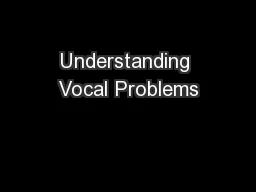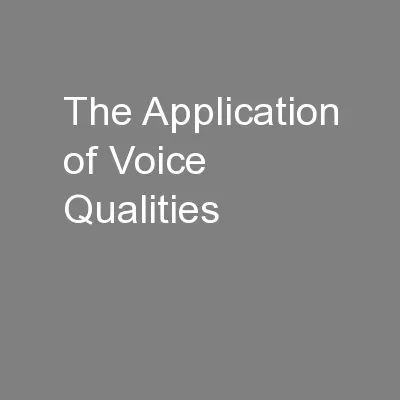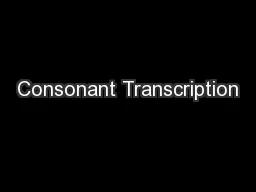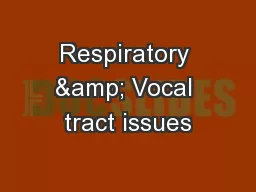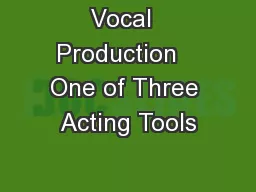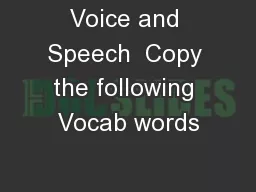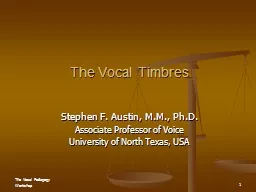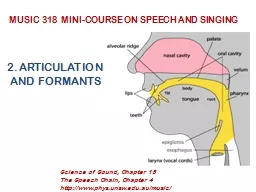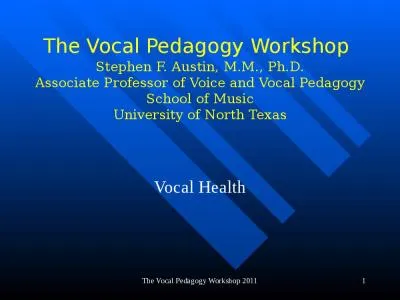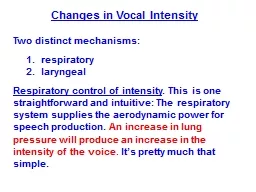PPT-Semi-Occluded Vocal Tract Exercises for Voice Therapy (and
Author : test | Published Date : 2016-06-08
AKA Why we Trill Hum use straws etc Liz Savina Redcliffe Hospital For Qld Voice Special Interest Group May 2014 Overview Definition amp brief background
Presentation Embed Code
Download Presentation
Download Presentation The PPT/PDF document "Semi-Occluded Vocal Tract Exercises for ..." is the property of its rightful owner. Permission is granted to download and print the materials on this website for personal, non-commercial use only, and to display it on your personal computer provided you do not modify the materials and that you retain all copyright notices contained in the materials. By downloading content from our website, you accept the terms of this agreement.
Semi-Occluded Vocal Tract Exercises for Voice Therapy (and: Transcript
Download Rules Of Document
"Semi-Occluded Vocal Tract Exercises for Voice Therapy (and"The content belongs to its owner. You may download and print it for personal use, without modification, and keep all copyright notices. By downloading, you agree to these terms.
Related Documents


